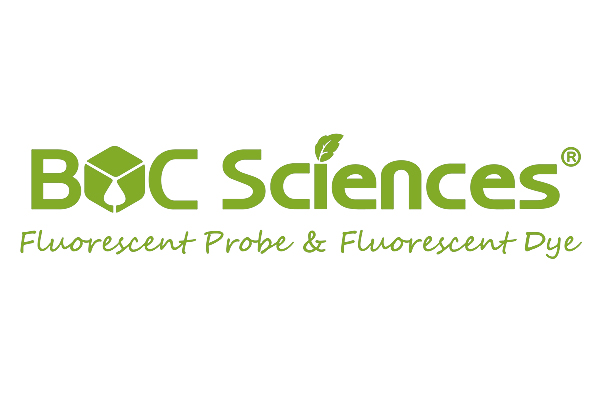Cyanine3
-

-

-

-
-cy3.gif)
-

-

-

-

-

-
 Cy3B
Cy3BCAT:
-
-3-(1,3,3-trimethylindolin-2-ylidene)prop-1-en-2-olate.gif)
-
.gif)
-

-

-

-

-
 Cyanine 3 CPG
Cyanine 3 CPGCAT:
-

-

-

Background
BOC Sciences is committed to providing customers with high-quality cyanine3 dyes.
Cyanine 3 is a class of bright, water-soluble and pH-insensitive cyanine fluorescent dyes that emit orange-yellow fluorescence with excitation and emission peaks at around 550 nm and 570 nm, respectively. The 532 nm or 555 nm laser line excitation can be used in confocal microscopy and tetramethylrhodamine (TRITC) filter sets for visualization. Conjugates of cyanine 3 dyes produce less background than most other commonly used fluorescent dyes. The extinction coefficient (εmax) and quantum yield (Φ) of cyanine 3 are150000 and 0.04, respectively.
Characteristics of Cyanine 3 Dyes
Cyanine 3 dyes can be divided into common cyanines and sulfonated cyanines according to their chemical structures. They have poor water solubility, and organic co-solvents are often used in aqueous labeling reactions. DMF, DMSO, and acetonitrile are the common organic solvents. Storage conditions are -20°C dry and protected from light. They have poor chemical and photostability. The cyanine 3 dyes have small cellular and tissue autofluorescence in the near-infrared band, and the light waves of cyanine 3 have excellent tissue transmission in the near-infrared region. These dyes are almost no cytotoxicity.
Application of Cyanine 3 Dyes
The host fluorophore in the structure of Cyanine 3 dyes is the parent nucleus of cell potential trackers such as Dil. Therefore Cyanine 3 dyes are very useful fluorescent dyes in biotechnology. In fluorescence imaging, the background fluorescence of cyanine 3 is generally lower than that of TRITC series dyes. It can be used to label proteins, antibodies, peptides, etc. The most common use of these dyes is to label nucleic acid molecules (DNA and RNA). This class of dyes can also be observed with TRITC (tetramethylrhodamine) filter in ordinary fluorescence microscope, and can be used in most fluorescence instruments. Based on the similarity of fluorescence spectra, cyanine 3.5 dyes can be replaced by dyes such as TAMRA, TRITC, and BODIPY TMR. When a brighter and more stable alternative is required, the AF547 or AF555 can be considered.
Resources

- Hoechst Dyes: Definition, Structure, Mechanism and Applications
- Mastering the Spectrum: A Comprehensive Guide to Cy3 and Cy5 Dyes
- Fluorescent Probes: Definition, Structure, Types and Application
- Fluorescent Dyes: Definition, Mechanism, Types and Application
- Coumarin Dyes: Definition, Structure, Benefits, Synthesis and Uses
- Unlocking the Power of Fluorescence Imaging: A Comprehensive Guide
- Cell Imaging: Definitions, Systems, Protocols, Dyes, and Applications
- Lipid Staining: Definition, Principles, Methods, Dyes, and Uses
- Flow Cytometry: Definition, Principles, Protocols, Dyes, and Uses
- Nucleic Acid Staining: Definition, Principles, Dyes, Procedures, and Uses
Online Inquiry

